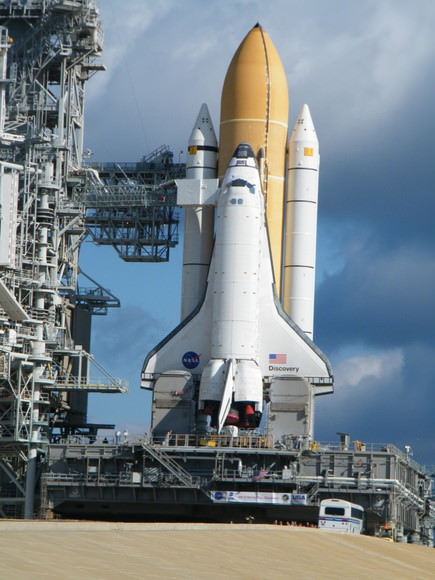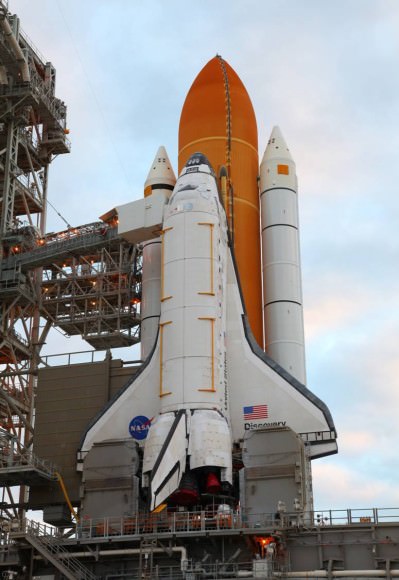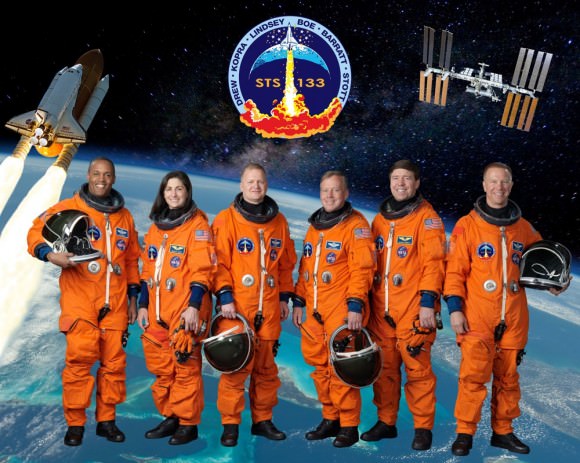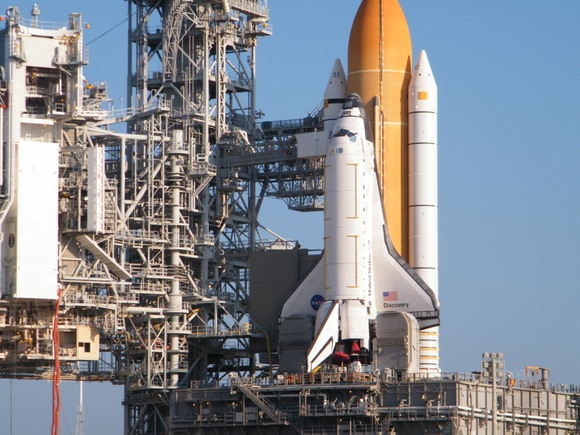[/caption]
Second Update (10/30): Launch of space shuttle Discovery is now targeted for Wednesday, Nov. 3 at 3:52p EDT. Technicians are still working to make repairs on the OMS engine.
The launch of space shuttle Discovery for the STS-133 mission has been pushed back at least one day due to the discovery of leaks in the right hand Orbital Maneuvering System Pod. Therefore, the launch will occur no sooner than Tuesday, Nov. 2 (and that has now been pushed to Nov. 3) . Managers, engineers and technicians are evaluating helium and nitrogen leaks in the pressurization portion of the OMS pod. The leaks must be fixed before launch and the decision was made to delay at least a day. Countdown had been scheduled to begin at 3 p.m. EDT today (Friday) but could begin on Saturday at 2 p.m. if the leak situation is resolved soon. The launch window on Tuesday, November 2 would open at 4:17 p.m. Wednesday, Nov. 3 at 3:52p EDT. NASA will be holding a press conference at 10 am EDT (watch on NASA TV), and we’ll provide an update after the conference. (See update below)
These leaking helium and nitrogen seals are unrelated to the fuel leak that was repaired last week, also related to Discovery’s right OMS pod.
In other shuttle news, there are some political rumblings that the additional shuttle mission — among other things — that was part of the newly signed outline for NASA’s budget could be under threat of being cut. Some politicians are looking at cutting NASA’s budget in order to save money, and the $300 million uptick for NASA is one target. For more information, check out this article in the Orlando Sentinel.
UPDATE: During the press conference Friday morning, launch test director Jeff Spaulding said this type of repair has been done several times previously on the launch pad, so they are not very worried about this causing a big delay. They do have to re-pressurize the various tanks, which require a pad clear (getting all personnel away from the launch pad), so that causes some delay in that they can’t proceed with the normal countdown activities.
As of right now, they are assuming they can launch on Tuesday because it is a rather routine repair. The teams did work overnight on removing the seals where the leak was found. “The standard process is to remove and inspect both sides of the connector to look at the problem of what caused the leak,” Spaulding said. “Sometimes the seals reseat themselves just by taking them apart and putting it back together, but the team did see contamination — a seal was in the wrong place. They did get it to lock up when they reconnected it, but they weren’t really comfortable with it knowing there was possibly some contamination.”
So today, the teams will likely replace the connectors.
STS-133 is an 11 day mission to the ISS, which is bringing up supplies, and the new permanent logistics module (basically a store room) and the humanoid robot Robonaut 2. (R2).
NASA is expect a huge crowd for the launch, as this is Discovery’s final mission. There’s also an air show in the area this weekend, so many people are planning to attend both the show and the launch. But that is not a factor in making the decision to launch, Spaulding said. “We are happy to have the teams that handle these kinds of repairs, and we will fly this vehicle only when it is ready to go.”
Another item of note is that Nov. 2 is Election Day here in the US, so NASA has encouraged their employees to do early voting in case the launch is on Tuesday and employees would then likely not have the time to vote.
As far as weather, Weather Director Kathy Winters said on Tussday there is a small concern about some rain coming into the area, and right now there would be a 30% chance of weather prohibiting launch on Tuesday.







